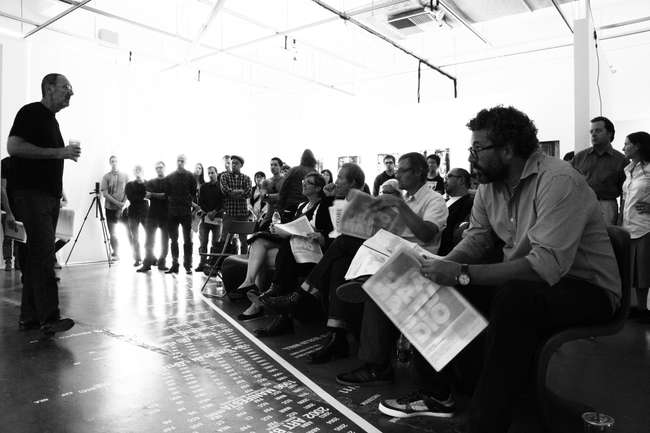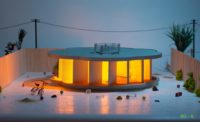
Five years ago, UCLA’s Department of Architecture and Urban Design (A.UD), took the bold step of replacing its post-professional, or Masters of Architecture II, curriculum with what it calls the Suprastudio: an intensive, yearlong, R+D collaboration, led by a single faculty member in partnership with leaders from the aerospace, automotive design, or entertainment industries. The idea was to embrace cutting-edge technologies and engage architecture’s changing profession in productive and inventive ways.
Teaming with companies such as Toyota and Disney, A.UD gradually ramped up the program, offering just one of these immersive studios annually. But now, beginning in the 2013-14 academic year, the program will expand to three simultaneous Suprastudios, each with 15 students, at an off-campus satellite location. The last half-decade “provided UCLA with a testing ground for the Suprastudio,” says A.UD chair Hitoshi Abe, confirming “the demand and need” for such cross-disciplinary research.
The program’s new location will be the Hercules office park in Los Angeles’s Playa Vista neighborhood. On these grounds, Howard Hughes famously built his Spruce Goose aircraft in the 1940s and current tenants include YouTube and other media, entertainment, and technology enterprises. The venue is being billed as creative, professional, and a decisively non-academic environment, a place where Suprastudio students will have access to such resources as a 6,000-square-foot Advanced Technologies Lab, with high-tech robotics for testing speculative concepts like intelligent buildings that move.
Unlike most academic design studios, which typically last just one term and focus on individual work, the Suprastudio is modeled on professional practice, with collaborative teams, potentially long incubation times, and applied findings. “An important thing about the Suprastudios is that when we start, we don’t necessarily know where we’re going—so, it’s real research,” says Greg Lynn, a veteran Suprastudio head, who will lead one in the coming academic year, as will fellow A.UD professor Thom Mayne and visiting faculty Frank Gehry (with Gehry Technologies). “We’ve dovetailed with very different industry partners,” Lynn adds, “and each time, we have to identify the provocative questions and figure out ways for architecture to plug into them.”
Expanding on that that idea, Mayne says: “Students should be job creators — instead of going out and looking for work. They should be broadening the field, researching new avenues within the university as they’re investigating problems.” In some respects, Mayne developed the prototype for UCLA’s Suprastudio 12 years ago when he launched a series of yearlong studios that integrate professional practice with academia. His intensive courses currently operate under the dual banners of Suprastudios and the NOW Institute. The Institute, embedded within the A.UD, is a research entity focusing on issues of struggling cities through partnerships with policymakers at both the governmental and community level. Its initial investigations applied demographic, infrastructural, cultural, and spatial analysis to Greater Los Angeles and ultimately produced the influential L.A. Now books. More recently, a NOW Suprastudio resulted in the design and realization of the Float House for post-Katrina New Orleans. In the 2013-14 academic year, Haiti will be the focus of Mayne’s studio.
Suprastudio’s collaborative and interdisciplinary character may be part of a broader educational trend reflected elsewhere, as in MIT’s Media Lab or Stanford’s entrepreneurial d.school. “But,” says Abe, “what sets us apart most: the Suprastudio is based in architecture and urban design.”


Post a comment to this article
Report Abusive Comment